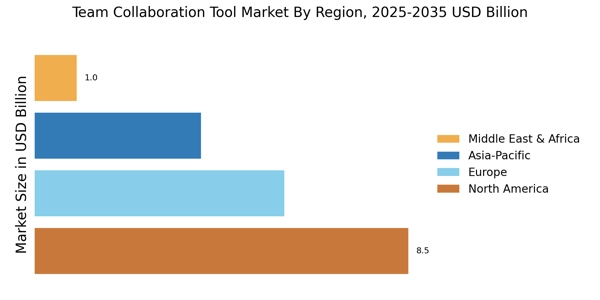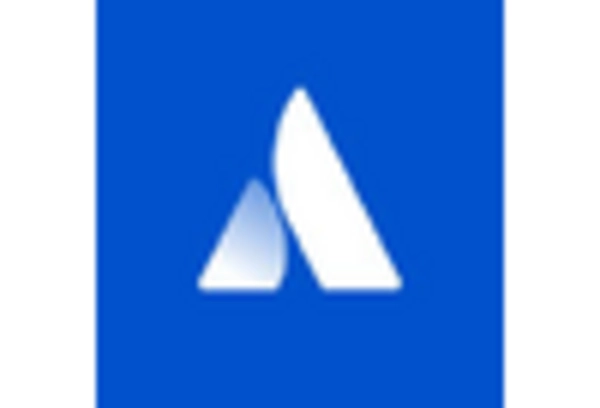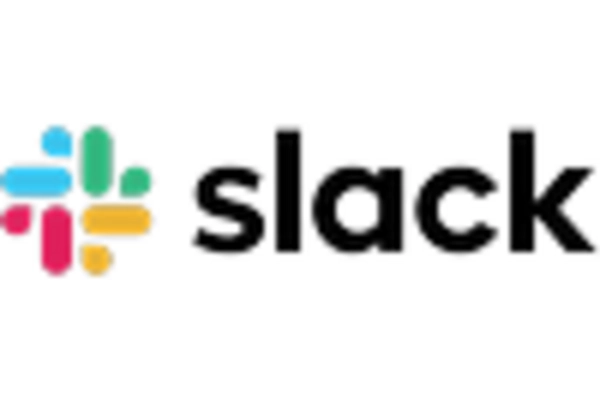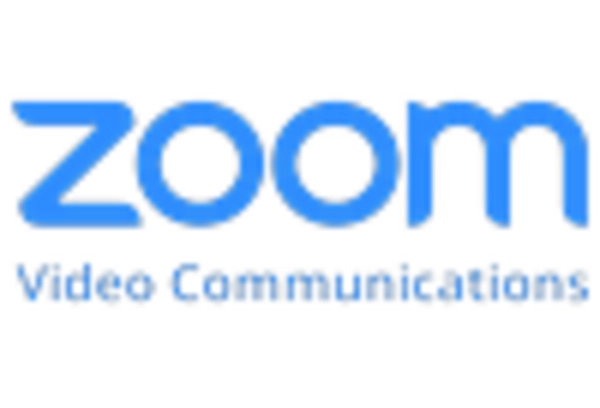Rise of Remote Work Culture
The rise of remote work culture has catalyzed the demand for the Team Collaboration Tool Market. As organizations increasingly adopt flexible work arrangements, the need for effective communication and collaboration tools has surged. According to recent data, approximately 70% of employees now work remotely at least part of the time, necessitating tools that facilitate seamless interaction. This shift has prompted companies to invest in collaboration platforms that enhance productivity and foster team cohesion, thereby driving growth in the Team Collaboration Tool Market. Furthermore, the trend towards hybrid work models is likely to sustain this demand, as businesses seek solutions that accommodate both in-office and remote employees.
Increased Focus on Team Productivity
The emphasis on team productivity is a pivotal driver in the Team Collaboration Tool Market. Organizations are increasingly recognizing that effective collaboration directly correlates with enhanced productivity levels. Data indicates that teams utilizing collaboration tools can achieve up to 30% higher productivity compared to those relying on traditional communication methods. This realization has led to a surge in investments in collaboration technologies, as companies strive to optimize workflows and streamline processes. The Team Collaboration Tool Market is thus experiencing robust growth, as businesses seek to equip their teams with tools that facilitate real-time communication, project management, and task tracking, ultimately fostering a more efficient work environment.
Integration of Advanced Technologies
The integration of advanced technologies, such as artificial intelligence and machine learning, is transforming the Team Collaboration Tool Market. These technologies enhance the functionality of collaboration tools, enabling features like automated task assignments, intelligent scheduling, and predictive analytics. As organizations seek to leverage these innovations, the demand for sophisticated collaboration platforms is expected to rise. Market data suggests that tools incorporating AI capabilities can improve decision-making processes and reduce operational inefficiencies. Consequently, the Team Collaboration Tool Market is poised for significant growth as companies adopt these advanced solutions to stay competitive and meet the evolving needs of their teams.
Emphasis on Data Security and Compliance
The emphasis on data security and compliance is a critical driver in the Team Collaboration Tool Market. As organizations increasingly handle sensitive information, the need for secure collaboration tools has become paramount. Regulatory requirements, such as GDPR and HIPAA, necessitate that collaboration platforms adhere to stringent security standards. Market analysis indicates that companies are willing to invest significantly in tools that offer robust security features, including end-to-end encryption and user authentication. This focus on security not only protects sensitive data but also builds trust among users, thereby driving the adoption of secure collaboration solutions within the Team Collaboration Tool Market.
Growing Demand for Mobile Collaboration Solutions
The growing demand for mobile collaboration solutions is reshaping the Team Collaboration Tool Market. With the proliferation of smartphones and tablets, employees increasingly expect to access collaboration tools on-the-go. Recent statistics reveal that over 60% of employees utilize mobile devices for work-related tasks, underscoring the necessity for mobile-friendly collaboration platforms. This trend is prompting developers to prioritize mobile compatibility in their offerings, leading to a surge in mobile-centric collaboration tools. As organizations recognize the importance of enabling their teams to collaborate effectively from anywhere, the Team Collaboration Tool Market is likely to witness sustained growth driven by mobile solution adoption.


















Leave a Comment